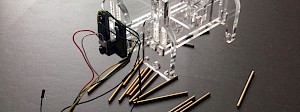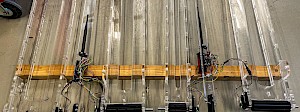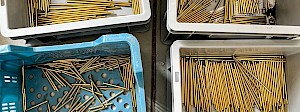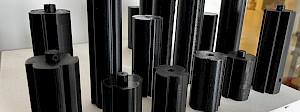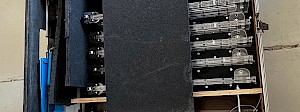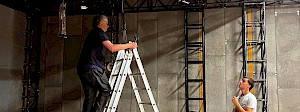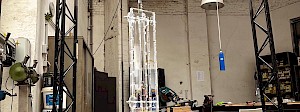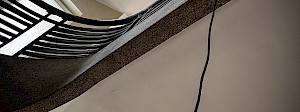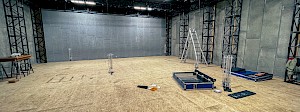Between copper and zinc Kunrad Mar 2022 -
Kunrad will research small brass tubes as material. These tubes are 4mm in diameter with a wall thickness of a few millimeters. He discovered that the tubes produce a complex sound in free fall. If you throw the tubes in the air, they collide and start a singing, buzzing sound. With a floor made of sand or soil, this sound is suddenly interrupted by a thud. From this vantage point, Kunrad will research and develop new work.
More in-depth information:
Sound research
The timbre depends on the length, diameter and wall thickness of the tubes. In addition, the zinc content of the brass alloy is also important. The higher the zinc content, the more complex the sound of the brass tube. By making the tubes sound simultaneously, complex chords are created. Placement in the space creates an interplay between the visitor and the formed chord, which is split up into separate elements, spatialisation. What is it like to walk inside a chord?
Dispensers containing the brass tubes are spread over a room hanging on the ceiling of a high building. The tubes fall down in a composed way, thus creating a sound piece. The tubes fall to the ground in circles of sand or soil. The reverberation of a high building, such as a church or a hall, is what keeps singing aftar a tube suddenly falls on the ground.
Designing the prototype
When designing the droppers I need to take the following design requirements into account:
- Droppers consist of modular elements that communicate in an adaptable network structure
- Magazines do not jam
- Artwork/instrument is easy to operate
In my design I’m using lasercut acrylic for the magazines because of the minimal tolerance of these riffle-like mechanics. For the motor mount I’m using a flexible type 3d print to combat potential small inaccuracies in the stiff motor-shaft and also absorb (sonic) resonance from the motors gearbox.
I’m still developing the best way to ring the tubes in the air. Right now I’m working on a holder with a rod perpendicular on the faling tubes. When falling down below the dropper the tubes will strike the rod and start ringing. For this holder I’m looking into stiff 3d printed materials.
For the electronics I’m working together with Bass Jansson. We are designing an esp-32 mesh-network. The main esp will play a midi file containing the composition. The compositional que’s (midi notes) will be dispersed to the dispensers hanging in the air. This way a midi note will result in a ringing tube falling down. The interface and programming will have some failsafe measures. At the start of every composition the wireless connection will be tested. If the connection test fails due to interference issues, the system will automatically search for other frequenties to communicate. The droppers will calibrate at the end of every composition to ensure only one tube dropping every note at exactly the right moment. With sub 30ms delay achieved there is room to play with short timing differences between the falling of tubes. This way interesting spatial effects can be achieved like ‘moving’ a sound source trough the space.
Credits
Production: Overtoon
Co-production: iMAL's Fablab
Supported by Creative EU via Oscillations, Exercises in resilience

